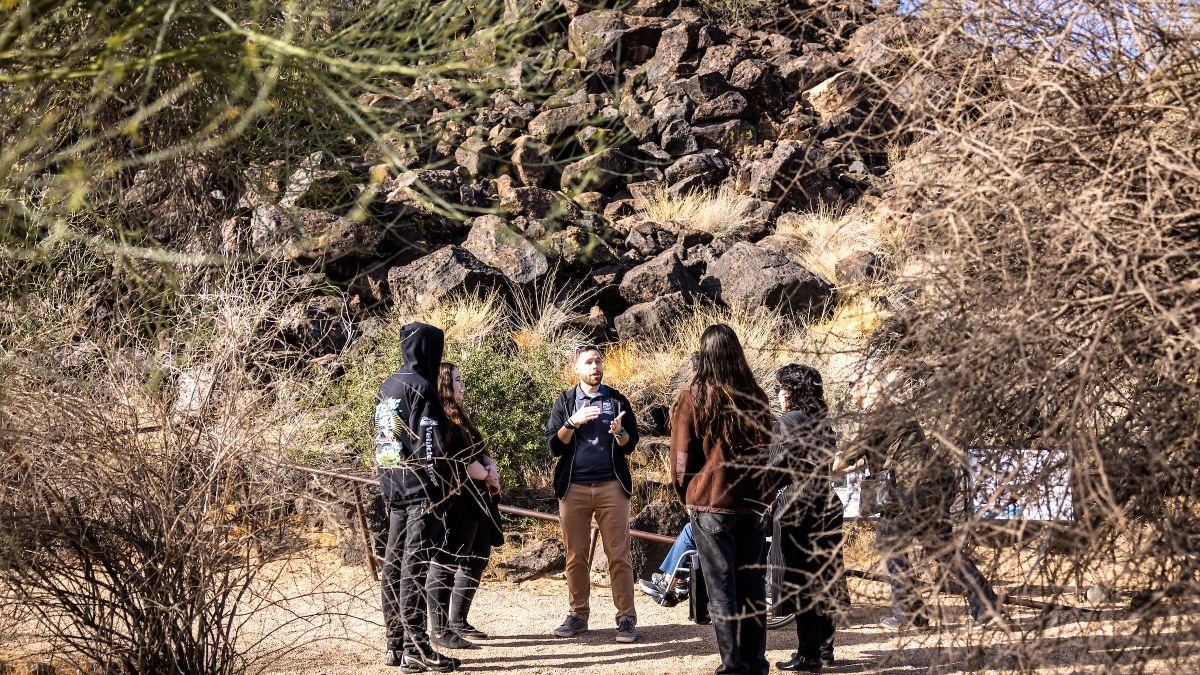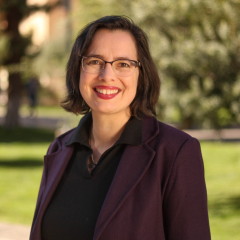Exhibit commemorates 100th anniversary of America's post-WWI German occupation

Sit in on any WWI history class in U.S. schools today and you probably won’t hear much about the American occupation of Germany that followed the war and lasted until 1923.
Arizona State University School of International Letters and Cultures German instructor Christiane Reves thinks that should change and hopes an exhibit now on display in the lobby of the Durham Language and Literature building will help.
On the 100th anniversary of the presence of American occupational forces in the regions between Trier and Koblenz, “Stars and Stripes Above the Rhine: The American Occupation in Germany after World War I” aims to educate ASU students, faculty, staff and the wider community about the laudable and conciliatory interactions between the Americans and the people who were once their military opponents.
“Those four years were significant not merely from a political and economic standpoint, but also due to effects on the culture and ideological history of the region,” Reves wrote in a description of the exhibit, which runs through March 1.
The exhibit will move to ASU’s West campus on March 25, where it will be on display until April 12.
Students can enter to win a competition for the exhibit by submitting a five-page essay or video project on the subject. Interested individuals should contact Reves at creves@asu.edu. The deadline is March 1.
ASU Now spoke with Reves ahead of the exhibit’s opening to learn more about this period in America and Germany’s shared history.
Christiane Reves
Question: Why is America’s occupation of Germany after WWI something that isn’t widely known?
Answer: For one, it was rather brief, only four years. But two other major things factor in: The region occupied by America after WWI was very small compared to the region America occupied after WWII, and also, the French occupation of Germany after WWI was more hostile than the American occupation, so it is more present in the collective memory. After WWII, Americans occupied Germany much longer, even up until after the Berlin wall fell. And they’re still present now.
Q: What are some examples of how it affected the culture and history of the region?
A: Dr. Sprenger did a great job of finding a lot of footage that reflects interactions between Germans and Americans after WWI. The typical picture you see is Americans cared a lot about the German population. There’s an iconic image of an American soldier giving candy to German children. My own mother lived during WWII, and one of her main memories from that time is receiving chewing gum from an American soldier. Dr. Sprenger also unearthed footage of American soldiers caring for German children, providing soup and other kinds of support. There was even an American bakery that produced something like 60,000 donuts a day. That was also when Germans were introduced to Coca-Cola and jazz music. And it was the first time Germans were exposed to American sports culture, such as baseball.
Q: How did it affect Germany from a political standpoint?
A: It was definitely the beginning of the trans-Atlantic friendship. At the beginning of the occupation, Americans were not allowed to fraternize with German soldiers, but because there was a shortage of housing, they had to share housing. There are photos of Germans and Americans posing together for family-style photos, and there were several thousand marriages happening then between Americans and Germans.
Q: Are these effects still felt today?
A: More and more people are now interested in their family history. Dr. Sprenger has worked with ancestry.com and brought two families together that didn’t know they had a common father. Also, what happened in this small occupation zone was used by the Pentagon as a blueprint for how to organize the occupation after WWII.
Q: Why is this something people should care about?
A: The trans-Atlantic friendship between Germany and America is something people in Germany really cherish. It is something that people are maybe starting to forget about in this new world with new challenges, but it’s good to remind ourselves of the long history of it. Also, the way the Americans handled the occupation was very exemplary in the sense that the goal was always to not only keep peace but build a new relationship; to rebuild and strengthen, rather than occupy and destroy. Which is why, even today in Germany, people are very grateful for the occupation because it gave Germany a chance to change and rebuild.
More Arts, humanities and education

Petroglyph preserve celebrates 30th anniversary with ancient, modern tales
The Deer Valley Petroglyph Preserve provides a beautiful walk through a pristine desert where chuckwalla lizards are as plentiful as the cacti that comes in many shapes and sizes.It’s also a step…

Kaleidoscope short film contest inspires powerful binational filmmaking in its second year
“We come to this country not to steal anybody’s jobs but to take advantage of the opportunities that the rest ignore. We’ve been taking care of the American soil for many years. But our hands will…

ASU's Neal Lester reflects on life, death of poet Nikki Giovanni
When Neal Lester heard on Monday that poet and activist Nikki Giovanni had died, the news hit hard.Lester, the founding director of Arizona State University’s Project Humanities and a Foundation…
